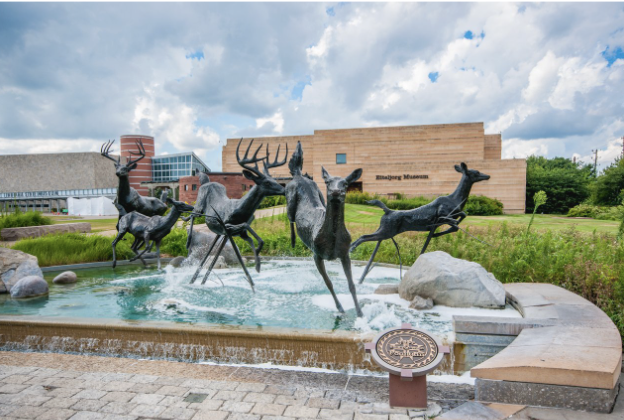Greetings, AEA365 readers! Liz DiLuzio here, Lead Curator of the blog. Registration for this year’s conference is officially open, and our local hosts at the Indiana Evaluation Association (IEA) are working with the AEA team to ensure our time in lovely Indianapolis is a fulfilling one. This week’s posts feature the voices of IEA’s members. Happy reading!

Greetings from Indianapolis! I am Karen Breece, an internal evaluator for Conner Prairie Museum in Fishers, Indiana. You may be like me in that every time you go to a new city you want to see a local museum (or maybe that’s a me thing). While you’re visiting our wonderful Indy attractions like The Children’s Museum of Indianapolis, Newfields, or Conner Prairie, you may wonder how these places measure their impact. Museums are for learning, but are people actually LEARNING when they go to these places? One fun fact is that all of the attractions I named have full-time internal evaluators. It’s up to us to show that museums make a difference, and we have a few unique tools up our sleeves to do so.
Evaluating the Museum Experience

The foundation of most museum experiences are exhibits. If you don’t read the signs in them, you’re not alone. As many museum evaluators will tell you, only a small minority of people read any of the signs. We know this because we observe visitors in these spaces. We have a special ethnographic method we use called timing and tracking. Evaluators using this method observe where people stop, what they do while they’re stopped, and how long they stay stopped. Most museum exhibits are evaluated with this method in my experience. It assumes that the longer someone stays in an exhibit the higher amount of engagement (and thus learning) they got from it.
With Conner Prairie’s exhibit Spark!Lab, which opened last year in partnership with the Smithsonian, I wanted to go deeper than timing and tracking. I wanted to know if people were experiencing the outcomes we had outlined in our theory of change for the exhibit. These basically amounted to: did going into this space make people think like an inventor? Unfortunately, mindreading is not among a museum evaluator’s unique skills. The best we could do is record people going into the space and listening in on their comments and conversations, using the walkalong method described by Skov, Lykke, and Jantzen in the Visitor Studies journal in 2018. Now that we’ve completed our data collection, we get to hear every time someone solves a problem, has a creative idea, or takes a risk in the space – it’s magical! And shows that the exhibit was worth the time, money, and partnerships it took to pull off.
Other Fun Facts About Museum Evaluators

- If there is an internal evaluator at a museum, it’s most often a one-person shop.
- Many museum evaluators also have experience doing market research due to its similar skillset. At my organization I’ve performed market research on our large-scale outdoor festivals and contributed to a brand perception study.
- We all come from different backgrounds, and each of us have stumbled into museum evaluation in our own way. I have degrees in history and museum studies. I’ve known arts and culture evaluators who are trained scientists, art historians, and even an ethnomusicologist.
- We have our own professional association – the Visitor Studies Association – where you can go to learn more. We have great webinars and an annual conference!
Looking Forward to the AEA Conference
One of the reasons I am excitedly looking forward to AEA in Indy is to hear all of your wonderful evaluation experiences across fields – in higher ed, public health, and public policy – and across continents. This way, I can bring back all of your wonderful ideas to the museum field. I hope you learned something from this post and if you want to talk informal learning evaluation, favorite museums, or Indy’s best restaurants, find me at AEA!
We’re looking forward to the Evaluation 2023 conference all this week with our colleagues in the Local Arrangements Working Group (LAWG). Do you have questions, concerns, kudos, or content to extend this AEA365 contribution? Please add them in the comments section for this post on the AEA365 webpage so that we may enrich our community of practice. Would you like to contribute to AEA365? Review the contribution guidelines and send your draft post to AEA365@eval.org. The views and opinions expressed on the AEA365 blog are solely those of the original authors and other contributors. These views and opinions do not necessarily represent those of the American Evaluation Association, and/or any/all contributors to this site.
